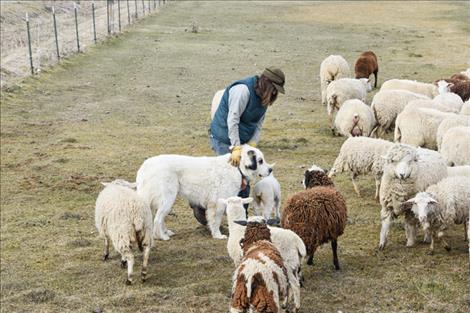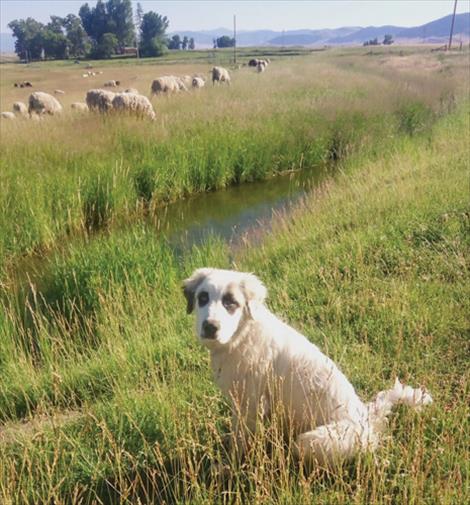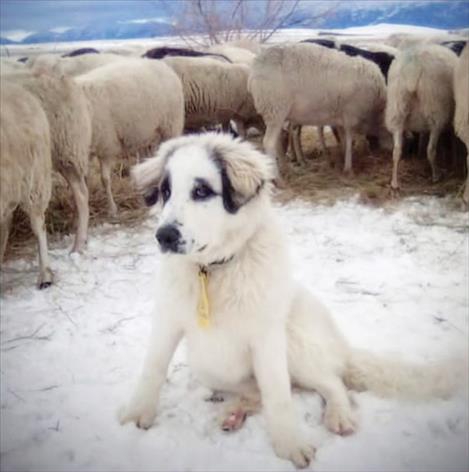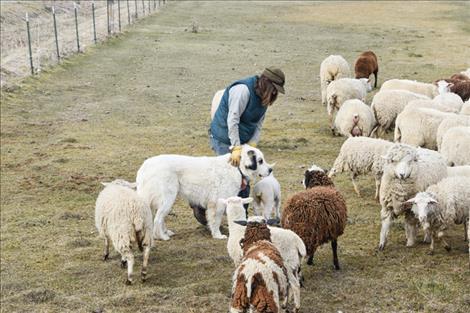Ranch dogs hold important jobs
Hey savvy news reader! Thanks for choosing local.
You are now reading
1 of 3 free articles.
POLSON — Ranch dogs are often essential to daily operations for livestock owners.
Out at Sierra Farms in Polson, Sasha and CB, who wear a fluffy coat of hair common to the Great Pyrenees breed, aren’t just family pets, they’re valued team members.
Sasha and CB are a Great Pyrenees, Anatolian Shepherd mix. Owner Sara Maldonado says “The mix of Anatolian Shepherd is pretty common in this part of the country since it gives them the coat of the Pyrenees and the endurance and lanky-ness of the Anatolian.” For dogs like Sasha and CB who work the night shift protecting their flocks, endurance is key. The two guard more than 100 sheep during the night. “Our dog’s job is to deter predators, mostly coyotes, bears, mountain lions, wolves, and probably the biggest predator we have - domestic dogs,” Maldonado said. Sierra Farms, she reflected, would be a lot different without canine livestock guardians. “We would have a lot more losses for sure and our sheep would be a lot less productive,” she said.
Proper training to prepare the dogs to be livestock guardians takes time. “You want to spend time with them as a puppy so they can bond with you as part of their pack. You also want to take the time to introduce them to the herd in a way that they won’t be scared of the herd as well as the herd not being scared of them.”
Pablo Maldonado, owner of Sierra Farms and father to Sara, added: “You also want to have two guardian dogs and you want to introduce them to the flock and have them live with the flock 24-7 so they can get used to all the smells from the flock and the flock get used to their smells so they will grow to learn and understand the dogs.”
“You want to have two LGDs,” he added, “so that one can go confront the threat while your other dog stays back protecting the herd.” Ranchers should only go to help in case of a fight or to help ward off predators. Though Sierra Farms would prefer for their LGDs to never get into fights – it’s part of the job. The size and strength of Sasha and CB, their mere presence and barks are an effective deterrent for most would be predators.
Besides being livestock guardians, dogs can also provide herding help, primarily for cattle and sheep. Sierra Farms also uses some herding dogs on their farm though most of the time the sheep will generally follow Sara or Pablo for some of the grain they carry in a bucket with them.
Another local, Jesse Johnston, utilizes a multitude of herding dogs in his operation. Johnston has quite a few dogs on his ranch to help herd his cattle that number in the hundreds, and to protect against coyotes that occasionally prowl for a stray calf. Instead of having dogs with great size and strength, Jesse employees the strategy of having many dogs to intimidate predators off. As far as coyotes go, Johnston believes his greater number of dogs help protect each other. “When a fight does break out it turns into a war,” he said. “The coyote will normally try and lure a dog out to kill them with numbers, but since my dogs also have a pack it doesn’t really work out for the coyotes to try and single out one of my dogs.”
















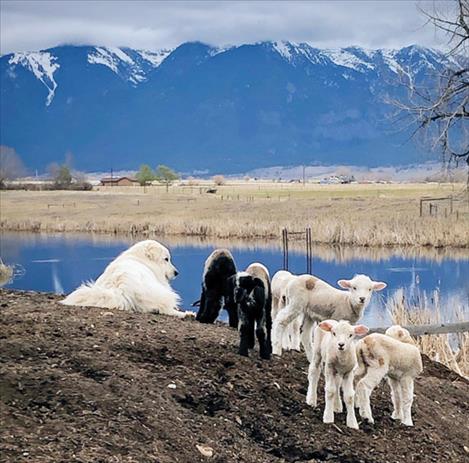
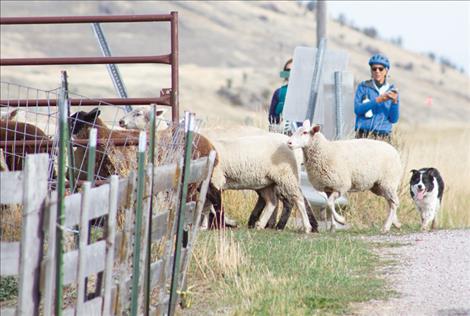
.jpg)
.jpg)



.jpg)

